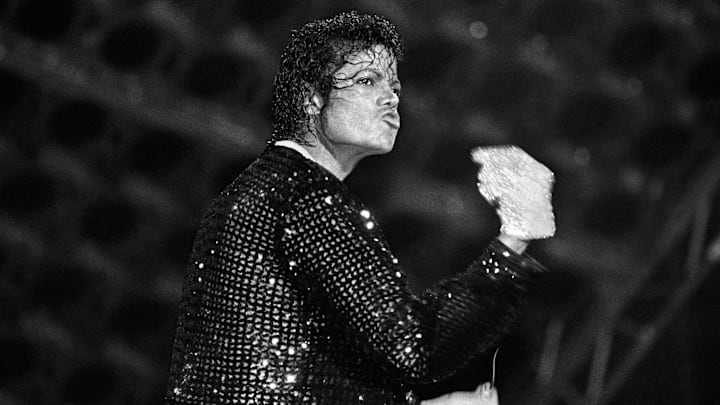If you are interested in dancin', you might wonder: Is it better to try tightening my muscles vs. letting them be loose and free? Your question makes perfect sense! To be honest, I am not much a dancer, and rarely ever dance in public. However, that didn't stop me from looking into this, and other dance-related questions, and aggregating expert advice. After all, dancing is a key aspect of music, right?
Whether to tighten the non-litera; bolts on your muscles or let them be free while dancing depends on the style of dance, the specific movements, and the effect you are aiming to achieve. In styles like ballet or ballroom dancing, you often need to engage and control your muscles to achieve precise, clean, "on point" movements. Improving dance skills involves focusing on body control, movement precision, and overall fluidity.
So here are some tips for beginners to enhance their dance technique. One of the first steps is to boost strength. Incorporate exercises like squats, lunges, and planks to build core and lower body strength.
For starters: For flexibility, stretch regularly, focusing on major muscle groups used in dance, such as hamstrings, calves, hip flexors, and shoulders. For balance, practice standing on one leg and slowly lifting and lowering the other leg (not entirely unlike what young Danny does near the end of The Shining). Use a balance board or practice yoga poses like tree poses to improve stability. As this lady suggests, "shoes are optional" for these exercises.
Core workouts to enhance dance technique
Strengthen your core with exercises like sit-ups, Russian twists, and leg raises.
A strong core helps maintain control and stability during complex movements. For sharper moves, they say to try isolation drills; practice isolating different body parts (e.g., shoulders, hips, head) to gain control over each section of your body. Use a mirror to check that only the intended body part is moving (it will be relevant to "whole-body" control to visually identify how your body functions.
Speed and precision
Start movements slowly to understand the mechanics, then gradually increase speed. You may try using a metronome to practice precise timing. Emphasize hitting clear end points in your movements to create sharp transitions.
Practice stopping abruptly at the end of each movement to develop control. For smooth moves, flow and continuity, it's recommended to practice linking moves together without pauses to create a seamless flow. Focus on transitioning smoothly from one movement to the next.
Breath control and weight shifts
"Synchronize your breath with your movements," as they say with Pilates. Inhale during slower, expansive movements and exhale during quick, forceful ones. Proper breathing enhances fluidity and reduces tension.
Be aware of your weight distribution and practice shifting your weight smoothly from one foot to the other. Use exercises like pliés and tendus to practice controlled weight shifts. It's even said, "There are two strong energies involved in the plié: gravity and the human psyche’s willpower." Tell me that doesn't sound deep!
Additional tips
Regularly practice in front of a mirror to observe and correct your form and technique. Though it might seem egocentric to keep a mirror handy while exercising, it's actually not just about self-love and vanity; one workout site notes: "Mirrors can lower your risk of injury. The best way to avoid fitness injuries is by practicing good form. Working out in front of mirrors can help you make the adjustments you need to prevent any mishaps, pulled muscles or sprains."
It might even be valuable to record your practice sessions, much as a musician might record their playing, to review and identify areas for improvement. Another one is obvious, but still something people might somehow forget: Practice dancing to different types of music to improve your rhythm and musicality. Pay attention to the beat, tempo, and mood of the music to match your movements accordingly.
Of course, this is also a good opportunity to explore different genres, if you are interested in looking outside of your comfort zone. Perhaps explore albums you didn't care for the first time around, because dancing to that stuff might be an interesting (if not formidable) challenge, and a way to take things to the next level. There are also lots of strange and unique subgenres to explore!
Warm up before dancing will prepare your muscles and possibly help prevent injuries.
Final thoughts
As I stated above, I rarely ever dance, but I don't think one must be featured on So You Think You Can Dance to aggregate some common knowledge-style advice. Oddly enough, maybe this article will help you out. Of course, feel free to join dance classes to learn from instructors and other dancers.
Watch videos of professional dancers to observe their technique and style, and be mindful of achievements like consistency and virtues like patience. What the website Swim Expert says about swimming could just as easily apply to dancing:
"Practice regularly to build muscle memory and improve your skills." At times, maybe it pays to see dancing like swimming, with fluidity of movement and all that.
Remember what Bruce Lee said in a movie once: "Empty your mind, be formless. Shapeless, like water. If you put water into a cup, it becomes the cup. You put water into a bottle and it becomes the bottle. You put it in a teapot, it becomes the teapot. Now, water can flow or it can crash. Be water, my friend."
Be patient with yourself and recognize that improvement takes time and dedication. Even Michael Jackson probably didn't master his dance routine overnight. People rarely become iconic, or otherwise skilled, overnight. By incorporating these tips into your practice routine, you probably will develop better body control, sharper movements, and smoother transitions, making your dancing more polished, enjoyable, and on point.
